
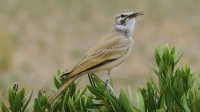
The Greater Hoopoe-Lark (scientific name: Alaemon alaudipes) is a very common resident breeding bird in the Kingdom of Saudi Arabia. It nests in most of the deserts of Saudi Arabia, including extremely arid sandy deserts, while avoiding the relatively humid western highlands. Its activity is mainly concentrated in Imam Saud Bin Abdulaziz Royal Reserve (Mahazat al-Sayd) in Makkah al-Mukarramah Province , west of Saudi Arabia. Description of the greater hoopoe-lark The greater hoopoe-lark measure...
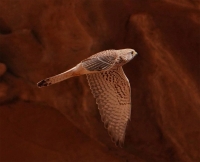
The Common Kestrel or simply Kestrel (Falco tinnunculus) is one of the recorded bird species in the Kingdom of Saudi Arabia. It belongs to the falcon family Falconidae, and is found in three different statuses in Saudi Arabia: as an uncommon resident breeder, an uncommon passage migrant, or an uncommon winter visitor. It is one of the most common falcons in Saudi Arabia, occurring across all regions as a resident breeder, with its numbers increasing in winter and during the spring migration. ...
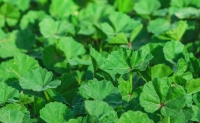
The Common Mallow (Malva parviflora) is a perennial herb with various medicinal uses. It grows in different regions of the Kingdom of Saudi Arabia, particularly around farms - especially abandoned ones - as well as in deserted dwellings of Bedouins, waste areas, livestock enclosures, and sandy and semi-sandy soils. It becomes more abundant in rainy spring seasons. Characteristics of common mallow Common mallow is also known as ' Khabbaza ' and ' al-khabbaz ' and is called ...
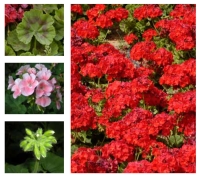
The Garden Geranium (Pelargonium × hortorum, Geraniaceae) is a small, perennial shrub belonging to the Geraniaceae family. It has herbaceous branches that emerge from a woody base, and grows to a height ranging between fifty and ninety cm. Native to southern Africa, it is cultivated in urban environments in Riyadh City , the Kingdom of Saudi Arabia. Characteristics of the Garden Geranium The Garden Geranium has herbaceous branches that emerge from a woody base, reaching a height of up to ninet...
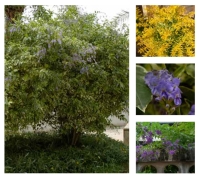
The Pigeon Berry (Duranta erecta, Verbenaceae) is a shrubby plant belonging to the verbena family Verbenaceae. It has opposite, serrated, glossy, and evergreen leaves. Its native habitat is the tropical regions of the Americas, extending northward to the arid areas of California. It is cultivated in Riyadh Province in the Kingdom of Saudi Arabia and is commonly used as a hedge, in public gardens, around homes, and in pedestrian areas. Due to its diverse forms and flower colors, it is also known...
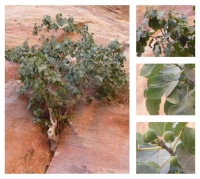
The Sycamore Fig or Fig-Mulberry (Ficus pseudosycomorus, Moraceae) is a wild plant from the mulberry family. It is cultivated in Riyadh City , the capital of the Kingdom of Saudi Arabia, and grows in protected valleys, surface rocks, and sandy slopes. It can also grow on rocky cliffs due to its long roots. Its native habitat includes tropical, subtropical, and Mediterranean regions. It is a medicinal plant and is grazed by camels. Characteristics of the Sycamore Fig The Sycamore Fig grows rapid...
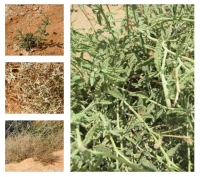
The Wavy Heliotrope (Heliotropium crispum, Boraginaceae) is one of the plants that grow in the Kingdom of Saudi Arabia. It is a perennial subshrub belonging to the Boraginaceae family. It is commonly found in limestone and sandy areas in Riyadh Province and is considered a fodder plant. It is widespread in sandy valleys and agricultural lands and also grows in rocky terrains. The Wavy Heliotrope plant attracts certain types of insects and serves as a primary food source for butterfly larvae. It...
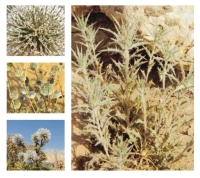
The Globe Thistle or Spiny Globe-Thistle (scientific name: Echinops spinosissimus) is a perennial plant belonging to the Asteraceae family. It grows in the Mediterranean Basin, the Middle East, and the Arabian Peninsula. It can be found in Riyadh City and the surrounding areas and is also well known in Aseer Province in the southwestern part of the Kingdom of Saudi Arabia, where it grows along the banks of valleys or near rocky slopes. Characteristics of the Globe Thistle The Globe Thistle is a...
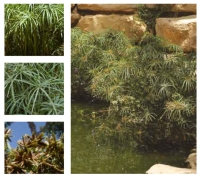
The Umbrella Sedge Plant (Cyperus involucratus, Cyperaceae) is a semi-grass-like plant from the Cyperaceae family. It is cultivated in Riyadh Province , in the Kingdom of Saudi Arabia, and its native habitat includes the southern regions of Africa and the island of Madagascar. Growth environment of the umbrella sedge plant The umbrella sedge plant was previously found only near water sources, but it has since naturally spread to drier soils, adapting to moderately moist soil conditions with les...
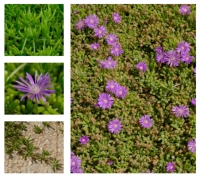
The Hairy Dewflower or Rosea Ice Plant (Drosanthemum hispidum, Aizoaceae) is a perennial succulent native to South Africa and Namibia. It serves as a ground cover in Riyadh , in the Kingdom of Saudi Arabia. Habitat of the Hairy Dewflower The Hairy Dewflower requires adequate care and initially grows as a spreading plant at a height of twenty cm, with a central protrusion that can rise to sixty cm and extend up to one m. It is an evergreen plant with opposite leaves that can reach three cm in le...
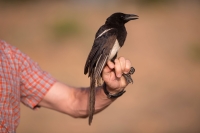
The Aseer Magpie (Pica asirensis) is one of the bird species recorded in the Kingdom of Saudi Arabia . It is a very rare resident breeding bird, confined to a small area in the Aseer Mountains. It is the only bird species endemic to Saudi Arabia and one of nineteen bird species native to Jurf Raydah Natural Reserve, with its activity concentrated in Tanumah Governorate . Description of the Aseer Magpie The Aseer magpie measures forty-six cm in length and weighs 240 g. It has a dark black color ...
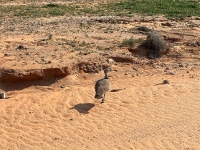
The Houbara Bustard is a type of wild bird known for its low-altitude flight, landing on the ground before taking off again. Both the male and female share the same name, Houbara. Some species of the Houbara Bustard are resident in the Kingdom of Saudi Arabia, while others are found in Asia, Europe, Africa, and Australia. Certain species migrate to Saudi Arabia during winter from Europe and some parts of Asia in the fall months. The Arabs in ancient times associated barren lands with the Houbar...